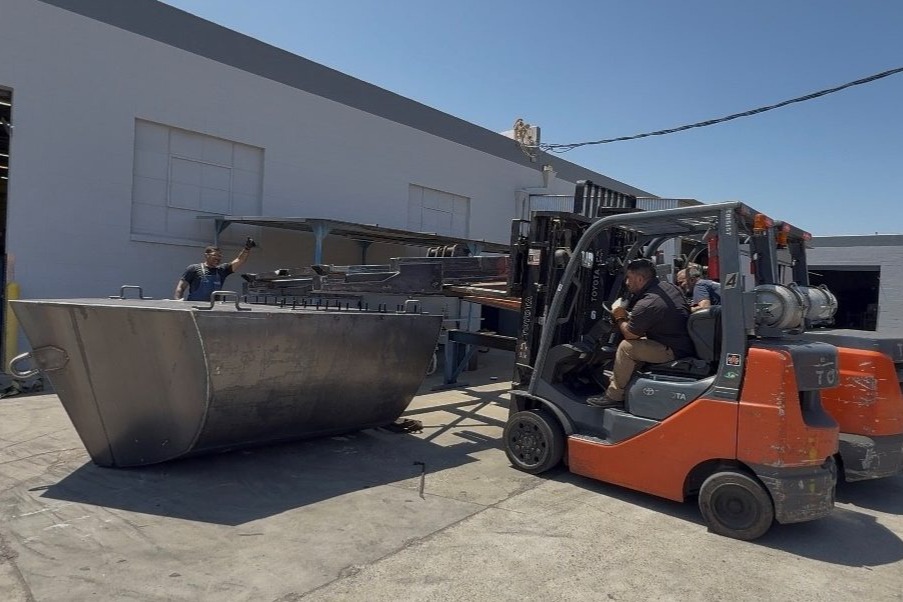

The Solutions Explorer lets you create alerts that match your needs. You can create several alerts and you will receive a notification each time a new Solar Impulse Efficient Solutions is labelled and matches your filters.
Your Search Alerts will show up here.
Sign in to create alerts for your filters and search terms.
Sign inDon't have an account?
Sign upAccess exclusive opportunities for Investor Members Only
The Investment Hub is a platform by the Solar Impulse Foundation that connects innovators with investors to fund scalable and sustainable solutions. Through tailored matchmaking, e-pitches, and a collaborative digital environment, it helps drive impactful innovation forward.
Sign in to explore a world of dynamic and high-potential investment opportunities.
Sign inDon't have an account?
Sign upSeptember 9, 2025
The Port of Los Angeles
Los Angeles

The Port of Los Angeles Wave Energy Station is Eco Wave Power’s first U.S.-based project and marks the first onshore wave energy installation in the United States. Developed in collaboration with AltaSea and Shell MRE, the project showcases Eco Wave Power’s innovative technology, which uses floaters installed on existing marine structures to harvest green electricity from ocean and sea waves. As the floaters rise and fall with wave motion, they release a biodegradable fluid, which presses hydraulic pistons that drive a land-based generator to produce clean electricity. Set to become officially operational in September 2025, the station demonstrates how wave energy can be integrated into existing port infrastructure to diversify renewable energy sources, reduce carbon emissions, and support coastal resilience. This project aims to address the need for sustainable, locally generated power in urban coastal environments, while proving the viability of wave energy in the U.S. market.
Eco Wave Power’s Los Angeles project focuses on R&D and environmental assessment in collaboration with the Port of LA, AltaSea, Shell MRE, and PNNL, serving as a regulatory pathway for wave energy in the U.S. It supports the creation of a new local industry, driving job creation, coastal innovation, and renewable infrastructure development. The project contributes to emissions reductions, energy diversification, and long-term economic and environmental resilience.
Eco Wave Power is a leading onshore wave energy company revolutionizing clean energy with its patented, smart, and cost-efficient technology that converts ocean and sea waves into sustainable electricity. Dedicated to combating climate change, Eco Wave Power operates the first grid-connected wave energy system in Israel, co-funded by EDF Renewables IL and the Israeli Energy Ministry, which recognized the technology as a “Pioneering Technology.” Expanding globally, Eco Wave Power is preparing to install projects at the Port of Los Angeles, Taiwan, and Portugal, adding to its impressive project pipeline totalling 404.7 MW. The company has received support from prestigious institutions such as the European Union Regional Development Fund, Innovate UK, and the Horizon 2020 program, and was honoured with the United Nations’ Global Climate Action Award. Eco Wave Power’s American Depositary Shares (WAVE) are traded on the Nasdaq Capital Market.
Share
The information set out above, is solely for the purposes of information and the Solar Impulse Foundation does not provide any guarantee as to its authenticity, completeness or accuracy. This information does not constitute investment advice or a recommendation to buy into, transact or to enter into any agreement with any of the parties or persons mentioned above. Potential investors or interested parties are solely responsible for their investment or business decisions and for performing any due diligence required by the circumstances. The innovator has asserted ownership of the intellectual property rights for images, videos, and content showcased above, affirming full and unrestricted usage rights, and has provided explicit permission for the Solar Impulse Foundation to publish such information designated as "public" in the application form.